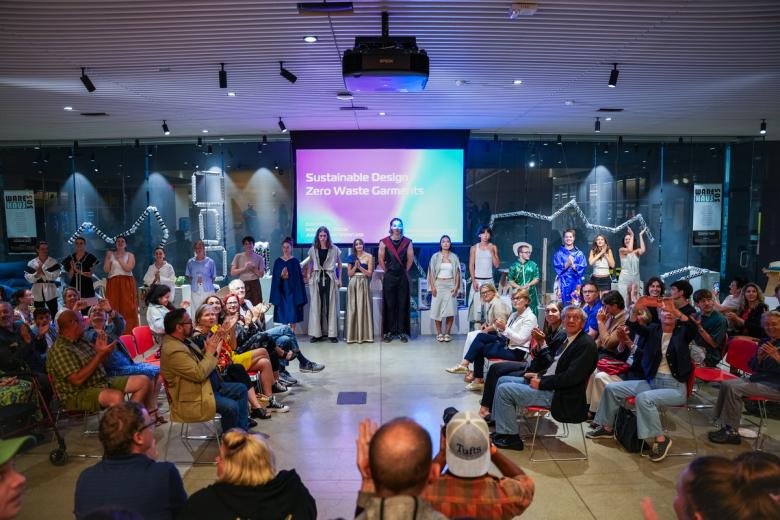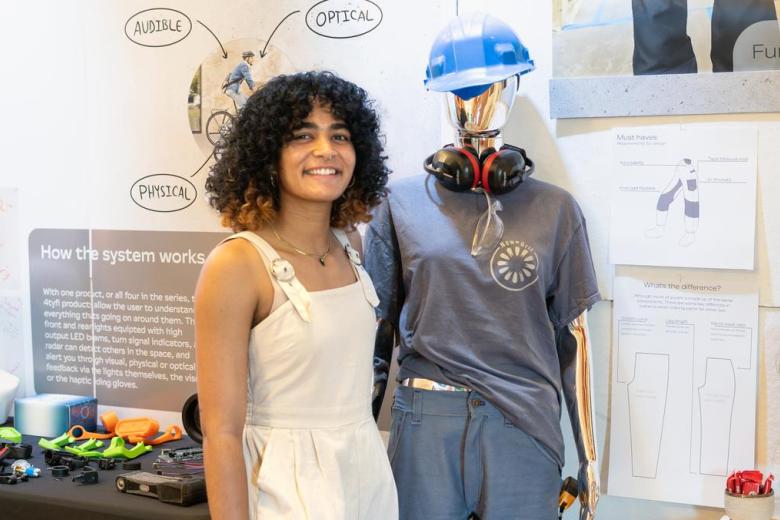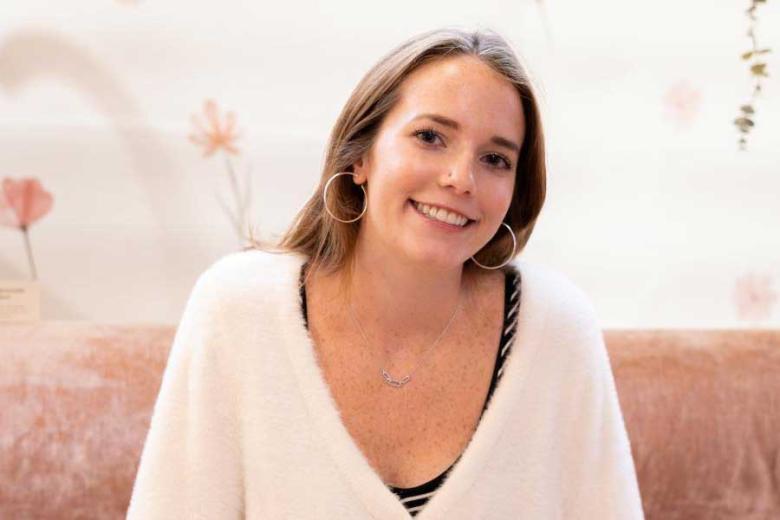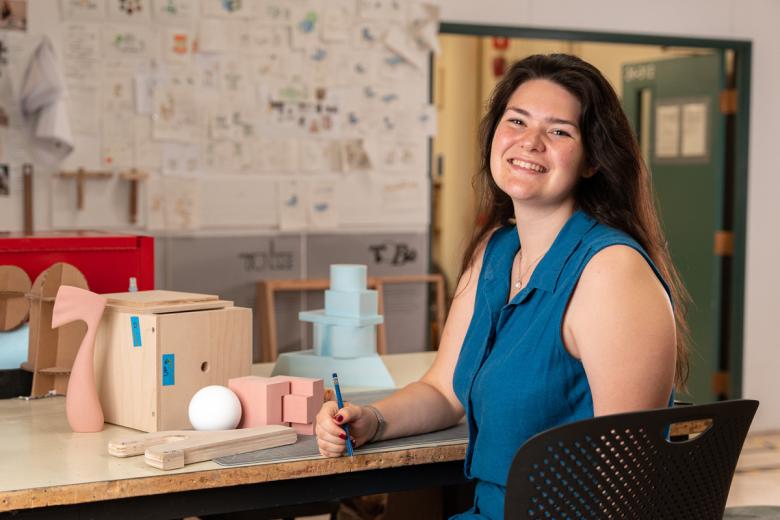-
Design at the Intersection of Art, Business & Technology
Professional industrial designers work at the intersection of art, business, and technology to craft and realize the products we use in our daily lives. They transform our needs and desires into innovative products and systems that are enriching and sustainable.
Create Real Products
Wentworth’s Industrial Design program positions students as technological leaders within the profession and as visionaries of our future world. Graduates of the program have a wide range of possible professional pathways ahead of them including designing next-generation consumer electronics, furniture, robots, vehicles, footwear, housewares, toys, and medical devices.
Learn in Hands-On Studios
Much of your educational experience will consist of experiential project-based studios, as well as courses in drawing, model making, manufacturing technologies (such as computer-aided design and rapid prototyping), user research, and design history. Classroom and studio experiences are complemented by two required cooperative work experiences. The co-op semesters enable students to apply knowledge learned in the studio and classroom, engage with professional practice, and learn from experienced industry professionals.
Wentworth’s Industrial Design program leads to a Bachelor of Science degree in Industrial Design. It is a four-year program, fully accredited by the National Association of Schools of Art and Design (NASAD).
-
Design a Difference
Industrial designers are artists, makers, creative problem solvers, and anyone who wants to make the world a better place. By understanding how people interact with the physical world, we create products, services, and solutions to improve peoples lives every day. Imagine an education where art and technology come together—a world where people are wearing shoes, riding bikes, playing with toys, and interacting with the digital devices you designed.
Wentworth Industrial Design graduates obtain well-paying jobs in a range of fields. Median starting salary of an Industrial Design is $60,000.
Recent graduates find jobs at top companies in Boston and around the country. The Top 5 employers of the most recent class of Wentworth Industrial Design graduates are:
- Jaywalk Studio
- Owens Insulation
- Keer Glass Foundry
- DRD Partners LLC
- C&C Metals Engineering, Inc.
Average hourly co-op pay for Industrial Design majors is $18.56.
Find a more in-depth look at career outcomes below.
-
The Bachelor of Science in Industrial Design is a four-year program, which begins in the fall semester of the student’s first year and is planned to end after the summer semester of the student’s fourth year. Much of your educational experience will consist of experiential project-based studios, as well as courses in drawing, model making, manufacturing technologies (such as computer-aided design and rapid prototyping), user research, and design history. Classroom and studio experiences are complemented by two required cooperative work experiences. The co-op experience reinforces curricular goals and accelerates an understanding of professional practice.
View the Course Catalog below for information about program requirements.
For an overview of the year-by-year experience in the Bachelor of Science in Industrial Design program, see "What You'll Learn" below.
Total credits for degree: 136
This is a four-year full-time program, which begins in the fall semester of the student’s first year and is planned to end after the summer semester of the student’s fourth year.
Plan of Study Grid First Year Fall Semester Credits DSGN1000 VISUALIZATION I/DRAWING I 3 DSGN1100 DESIGN MAGIC 2 INDS1000 INDUSTRIAL DESIGN STUDIO 1 4 INDS1750 VISUAL COMMUNICATION 4 English Sequence 4 Credits 17 Spring Semester DSGN1200 COLOR & COMPOSITION 4 INDS1500 INDUSTRIAL DESIGN STUDIO 2 4 INDS1850 VISUALIZATION 2: ADVANCED PERSPECTIVE 3 MATH1020 PLANE & SOLID GEOMETRY 4 English Sequence 4 Credits 19 Second Year Fall Semester INDS2000 INDUSTRIAL DESIGN STUDIO 3 4 INDS2300 3D REALIZATION I 4 INDS2350 VISUALIZATION 3: DRAW & THINK 3 INDS2600 CAD 1: SURFACE MODELING 3 HSS Elective 4 Credits 18 Spring Semester INDS2500 INDUSTRIAL DESIGN STUDIO 4 4 INDS2850 VISUALIZATION 4: PRESENTATION & ILLUSTRATION 3 INDS2800 3D REALIZATION 2 4 INDS3100 CAD 2: SOLID MODELING 3 HSS Elective 4 COOP2500 CO-OP INSTITUTE 0 Credits 18 Summer Semester COOP3000 OPTIONAL COOP EDUCATION 0 Credits 0 Third Year Fall Semester INDS3000 INDUSTRIAL DESIGN STUDIO 5 4 INDS3200 HUMAN FACTORS IN DESIGN 3 INDS3300 INFORMATION ARCHITECTURE 1 3 PHYS1010 CONCEPTUAL PHYSICS 4 General Education Elective 4 Credits 18 Spring Semester COOP3500 COOP EDUCATION 1 0 Credits 0 Summer Semester INDS3500 INDUSTRIAL DESIGN STUDIO 6 4 INDS3600 MANUFACTURING IN DESIGN 3 HSS Elective 4 Free Elective 3 Credits 14 Fourth Year Fall Semester COOP4500 COOP EDUCATION 2 0 Credits 0 Spring Semester INDS4000 INDUSTRIAL DESIGN STUDIO 7 4 INDS4011 DESIGN PERSPECTIVES: TOPICS IN HISTORY 4 INDS4300 INFORMATION ARCHITECTURE 2 3 HSS Elective 4 INDS5000 RESEARCH: SENIOR STUDIES 3 Credits 18 Summer Semester INDS4500 BUSINESS IN DESIGN 3 INDS4750 SENIOR SEMINAR 3 INDS5500 SENIOR STUDIES 4 HSS Elective 4 Credits 14 Total Credits 136 ENGL/HSS Note
Students in the Industrial Design major are required to complete a minimum of 32 credit hours in English, humanities, and social sciences, including:
- Two or three semesters of English, according to placement;
- At least one elective in Design History;
- At least one elective in Art History;
- At least one elective in Psychology or Sociology.
The remaining credit hours may be satisfied with electives in any of these Humanities and Social Science fields: COMM, CSAS, ECON, ENVM, HSSI, HIST, HUMN, LITR, PHIL, POLS, PSYC, SOCL.
Studio Grade Requirement
The School of Architecture and Design has a studio grade requirement that applies to all undergraduate design studio courses from the sophomore year onward. Students in the Bachelor of Science programs are responsible for demonstrating improvement and growth each semester and are held to the following standard in their design studios:
A final grade below C is considered a sub-standard grade, indicating that the student is not meeting expectations. Students who earn a final grade of C-, D+, or D for two consecutive semesters are not permitted to continue in the studio sequence until they successfully repeat the second studio for which they received a sub-standard grade.
-
The industrial design program leading to the Bachelor of Science degree is accredited by the National Association of Schools of Art and Design (NASAD), 11250 Roger Bacon Drive, Suite 21, Reston, VA 20190-5248.
For program objectives, outcomes and enrollment and degree data, please visit the Industrial Design Accreditation page.
Stories
What You’ll Learn
-
Year 1
You’ll establish a foundation for your Industrial Design program by taking introductory courses in visualization, color & composition, and visual communication, which will instill core design concepts that you’ll use throughout the program. You’ll begin work in the studio, which advances an understanding of design principles through a thematic series of three-dimensional projects.
-
Year 2
Second-year industrial design students continue their studio work and expand their knowledge with courses like Conceptual Physics, which surveys physics and its applications to modern life. You’ll also work with CAD and continue to establish a firm understanding of visualization concepts.
An optional pre co-op work term is available to students during the summer semester.
-
Year 3
In the fall and summer semesters of your third year, you’ll take courses like Information Architecture, which is a studio-based design course that develops each student's awareness and understanding of the visual language that designers use to graphically communicate information and meaning. In Human Factors in Design, you’ll delve into how humans interact with products and how design can affect those interactions.
In the spring, you’ll begin the first of two required co-ops.
-
Year 4
In the fall, you’ll go on your second required co-op to gain more hands-on industry experience.
The remainder of your program includes Business in Design, which examines the business of design practice by focusing on client/project management, marketing, professional communication, and entrepreneurship. You’ll also finish your program with your senior capstone project.








